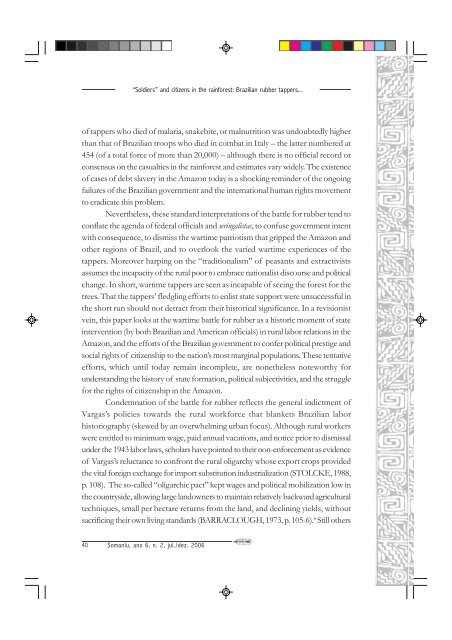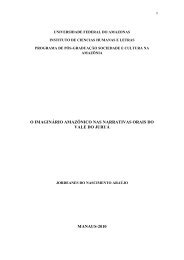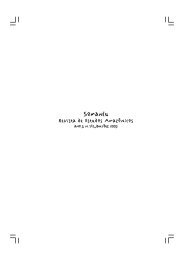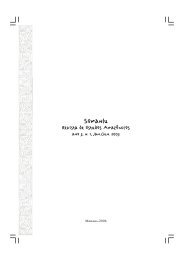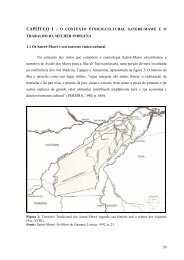somanlu jul dez 2006.pmd - Eventos - Ufam
somanlu jul dez 2006.pmd - Eventos - Ufam
somanlu jul dez 2006.pmd - Eventos - Ufam
You also want an ePaper? Increase the reach of your titles
YUMPU automatically turns print PDFs into web optimized ePapers that Google loves.
“Soldiers” and citizens in the rainforest: Brazilian rubber tappers...<br />
of tappers who died of malaria, snakebite, or malnutrition was undoubtedly higher<br />
than that of Brazilian troops who died in combat in Italy – the latter numbered at<br />
454 (of a total force of more than 20,000) – although there is no official record or<br />
consensus on the casualties in the rainforest and estimates vary widely. The existence<br />
of cases of debt slavery in the Amazon today is a shocking reminder of the ongoing<br />
failures of the Brazilian government and the international human rights movement<br />
to eradicate this problem.<br />
Nevertheless, these standard interpretations of the battle for rubber tend to<br />
conflate the agenda of federal officials and seringalistas, to confuse government intent<br />
with consequence, to dismiss the wartime patriotism that gripped the Amazon and<br />
other regions of Brazil, and to overlook the varied wartime experiences of the<br />
tappers. Moreover harping on the “traditionalism” of peasants and extractivists<br />
assumes the incapacity of the rural poor to embrace nationalist discourse and political<br />
change. In short, wartime tappers are seen as incapable of seeing the forest for the<br />
trees. That the tappers’ fledgling efforts to enlist state support were unsuccessful in<br />
the short run should not detract from their historical significance. In a revisionist<br />
vein, this paper looks at the wartime battle for rubber as a historic moment of state<br />
intervention (by both Brazilian and American officials) in rural labor relations in the<br />
Amazon, and the efforts of the Brazilian government to confer political prestige and<br />
social rights of citizenship to the nation’s most marginal populations. These tentative<br />
efforts, which until today remain incomplete, are nonetheless noteworthy for<br />
understanding the history of state formation, political subjectivities, and the struggle<br />
for the rights of citizenship in the Amazon.<br />
Condemnation of the battle for rubber reflects the general indictment of<br />
Vargas’s policies towards the rural workforce that blankets Brazilian labor<br />
historiography (skewed by an overwhelming urban focus). Although rural workers<br />
were entitled to minimum wage, paid annual vacations, and notice prior to dismissal<br />
under the 1943 labor laws, scholars have pointed to their non-enforcement as evidence<br />
of Vargas’s reluctance to confront the rural oligarchy whose export crops provided<br />
the vital foreign exchange for import substitution industrialization (STOLCKE, 1988,<br />
p. 108). The so-called “oligarchic pact” kept wages and political mobilization low in<br />
the countryside, allowing large landowners to maintain relatively backward agricultural<br />
techniques, small per hectare returns from the land, and declining yields, without<br />
sacrificing their own living standards (BARRACLOUGH, 1973, p. 105-6). 6 Still others<br />
40 Somanlu, ano 6, n. 2, <strong>jul</strong>./<strong>dez</strong>. 2006


